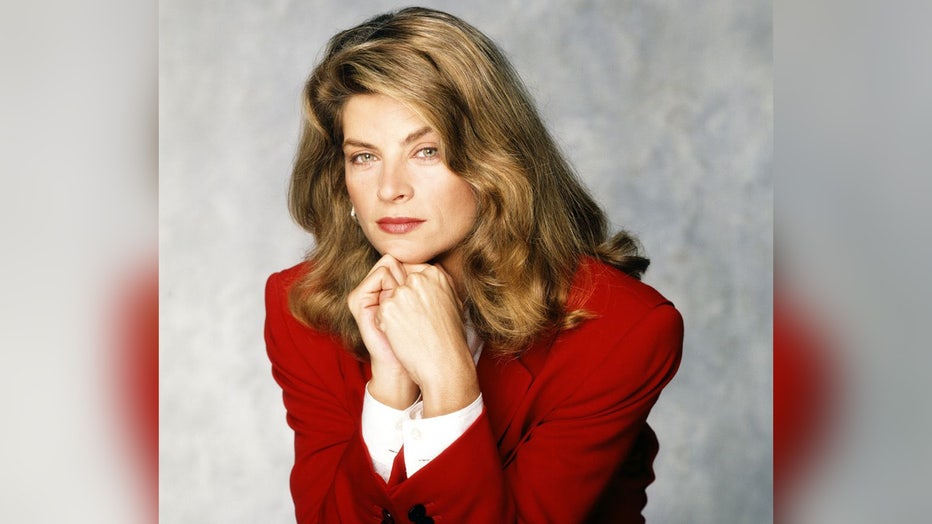'Cheers' actress Kirstie Alley dies at 71 after brief cancer battle, receiving care from Moffitt Cancer Center

LAS VEGAS, NV - AUGUST 05: Actress Kirstie Alley on day 3 of Creation Entertainment's Official Star Trek 50th Anniversary Convention held at The Rio Hotel & Casino on August 5, 2016 in Las Vegas, Nevada. (Photo by Albert L. Ortega/Getty Image
TAMPA, Fla. - Actress Kirstie Alley, the Emmy-winning star of "Cheers," and "Look Who's Talking," has died at the age of 71 after a battle with cancer.
Her family released a statement on social media announcing her death Monday evening. They said she passed away after a battle with cancer, which was only recently discovered.
The statement also went on to thank the team of doctors and nurses at Moffitt Cancer Center in Tampa for caring for Alley.
READ: ‘Twin Peaks’ actor Al Strobel dies at 83
"She was surrounded by her closest family and fought with great strength, leaving us with a certainty of her never-ending joy of living and whatever adventures lie ahead," True and Lillie Parker said in the statement. "As iconic as she was on-screen, she was an even more amazing mother and grandmother."
Alley starred opposite Ted Danson as Rebecca Howe on "Cheers," the beloved NBC sitcom about a Boston bar, from 1987 to 1993. She joined the show at the height of its popularity after the departure of original star Shelley Long.
Alley won an Emmy for best lead actress in a comedy series for the role in 1991. She took a second Emmy for best lead actress in a miniseries or television movie in 1993 for playing the title role in the CBS TV movie "David’s Mother."
She had her own sitcom on the network, "Veronica’s Closet," from 1997 to 2000.
PREVIOUS: Bob McGrath, 'Sesame Street' veteran and founding cast member, dies
In the 1989 comedy "Look Who’s Talking," which gave her a major career boost, she played the mother of a baby who’s inner thoughts were voiced by Bruce Willis. She would also appear in a 1990 sequel "Look Who’s Talking Too," and another in 1993, "Look Who’s Talking Now."
She would play a fictionalized version of herself in the 2005 Showtime series "Fat Actress," a show that drew comedy from her public and media treatment over her weight gain and loss.
She dealt with the same subject matter in the 2010 A&E reality series "Kirstie Alley’s Big Life," which chronicled her attempt to lose weight and launch a weight-loss program while working as a single mother in an unconventional household that included pet lemurs.

FILE - Kirstie Alley as Rebecca Howe. (NBCU Photo Bank/Getty Images)
Alley said she agreed to do the show in part because of the misinformation about her that had become a tabloid staple.
"Anything bad you can say about me, they say," Alley told the AP at the time. "I’ve never collapsed, fainted, passed out. Basically, anything they’ve said, I never. The only true thing is I got fat."
MORE: Keke Palmer reveals she’s pregnant during ‘SNL’ debut
In recent years she appeared on several other reality shows, including a second-place finish on "Dancing With the Stars" in 2011. She appeared on the competition series "The Masked Singer" wearing a baby mammoth costume earlier this year.
She appeared in the Ryan Murphy black comedy series "Scream Queens" on Fox in 2015 and 2016. One of her co-stars on the show, Jamie Lee Curtis, said on Instagram Monday that Alley was "a great comic foil" on the show and "a beautiful mama bear in her very real life."
Alley’s "Cheers" co-star Kelsey Grammer said in a statement that "I always believed grief for a public figure is a private matter, but I will say I loved her."
A native of Wichita, Kansas, Alley attended Kansas State University before dropping out and moving to Los Angeles. She also became a longtime member of the Church of Scientology.
Her first television appearances were as a game show contestant, on "The Match Game" in 1979 and "Password" in 1980. She made her film debut in 1982′s "Star Trek: The Wrath of Khan."
Alley was married to her high school sweetheart from 1970 to 1977, and to actor Parker Stevenson from 1983 until 1997.
The Associated Press contributed to this report.

